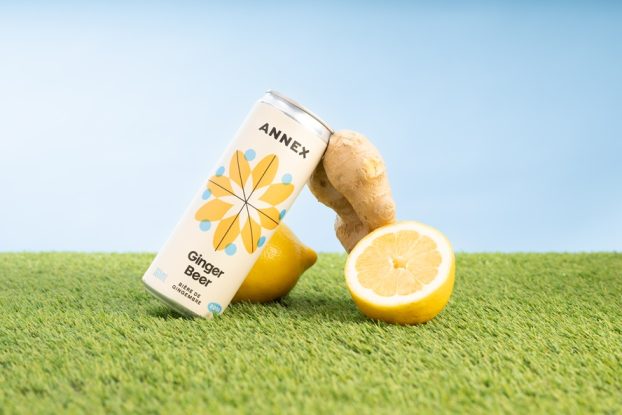Also in this report:
– Minorities are the majority: Chance to shift from ‘undifferentiated mass marketing to multifaceted ethnic marketing’: Page 24
– Long-term presence crucial to win over sceptics: Many demonstrating commitment by hiring staff who speak the language: Page 25
– Ethnic markets lack research data: Page 26
– Chinese New Year good entry point for marketers: Biggest festival of the year can provide access to Chinese consumers: Page 28
– Events raise profile, build trust: Page 28
Five months after Toronto Life and Maclean’s magazines launched Chinese editions of their English-language publications, advertising sales have been steadily increasing and reader response has been positive.
Bill Duron, publisher of Toronto Life, and Brian Segal, publisher of Maclean’s, say their projects are a success and both are confident things will stay that way.
Duron says when Toronto Life launched its Chinese edition in partnership with Ming Pao Daily News, Chinese businesses responded well, as did some advertisers in the English-language edition.
‘The salesforce of Ming Pao was able to connect with many Chinese businesses, especially restaurants and retailers, which Toronto Life would have had difficulty reaching,’ Duron says.
‘The magazine’s in-house salesforce was able to convince some regular edition advertisers that the Chinese edition was a winner,’ he says.
Martin White, advertising director for Toronto Life, says the biggest challenge was overcoming the ‘wait-and-see’ attitudes of advertisers awaiting the magazine’s acceptance by the Chinese community.
White says guaranteed monthly distribution in Ming Pao, as well as regular promotion of the Chinese edition in the newspaper before and after the launch was critical to the success in selling ads.
He says the first issue was received well by readers and advertisers alike.
Because of the pre-launch promotion and abundant press coverage in consumer and trade publications, the premiere issue sold well.
According to White, ad sales dropped roughly 15% to 20% after the first issue, but quickly bounced back.
Cathay Pacific Airways, a regular advertiser in Toronto Life’s English version, bought into the Chinese edition for a couple of reasons, says Caroline Schroeder, the airline’s manager of marketing communications.
First, Schroeder says, Toronto Life has a history of solid editorial, providing the airline a desirable and credible environment for its advertising messages.
Second, she says, ‘with a Canadian client base comprised of approximately 40% Chinese customers, Cathay Pacific was attracted to Toronto Life’s readership profiles of higher end, active readers with large amounts of disposable income.’
While some advertisers simply have their English-language ads translated into Chinese, Cathay Pacific produces creative specifically for a Chinese audience.
An ad in the current issue of Toronto Life, for example, is a Chinese New Year greeting, wishing readers prosperity in the Year of the Rat.
As far as the editorial is concerned, the stories are a straight translation from the English version, though slight cultural changes are often necessary.
Duron explains how in a recent article on former Ontario premier David Peterson, for example, ‘the tone and language of the story was too informal for a Chinese audience.
‘Even though Peterson is a retired premier, respect for the position still had to be shown, so the translators had to be more formal in writing the story,’ he says.
Maclean’s magazine also publishes a Chinese version of its English-language edition, distributed in Sing Tao (Ming Pao’s competition), as well as on Canadian Airlines and Cathay Pacific flights.
Segal says Maclean’s management decided to publish a Chinese-language version of its newsmagazine because Chinese immigrants are interested in learning more about Canada so they can better integrate.
As well, he says, the demographic profile of Chinese immigrants – affluent, urban and well-educated – made them readers well worth targeting.
Unlike Toronto Life, Maclean’s contains about 30% original material, specifically written for Chinese-Canadian readers.
Segal says the frequency of the publication seemed to be a greater obstacle to selling advertising than either language or cultural barriers.
Publishing six issues a year has been like a test run for the magazine, according to Segal, who hopes to begin publishing 10 issues annually.
The in-house salesforce at Maclean’s handles the majority of the ad sales, with some being handled by cfmt, a multi-ethnic tv station owned by Maclean’s parent company Maclean Hunter, and some by independent agents.
Segal says one of the biggest obstacles encountered was that many advertisers did not have specific marketing strategies for Asian consumers.
But, he says the situation is improving.
‘Many national advertisers are learning the value of producing Chinese-specific creative to meet the needs of their audience, and are making efforts to address the issue,’ Segal says.
Distribution is 80,000 national, and the cost of a full-page ad is $9,000 national, or $4,500 for the Toronto or Vancouver edition.
Circulation of Toronto Life is 35,000 and a full-page ad costs $2,980.
Neither magazine is considering any other foreign-language editions, believing that right now other ethnic markets are being adequately served by existing publications.























